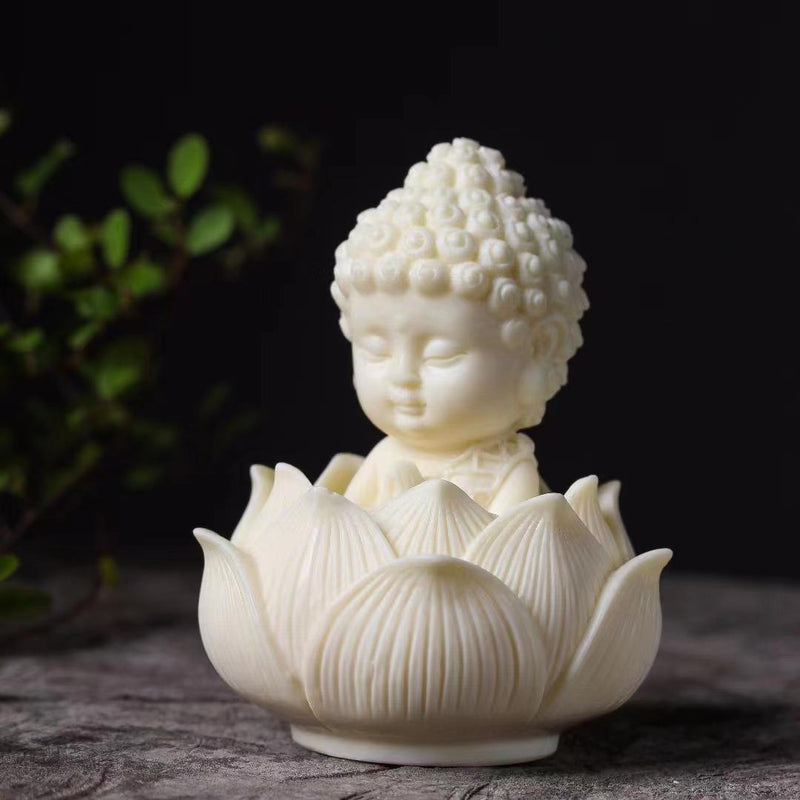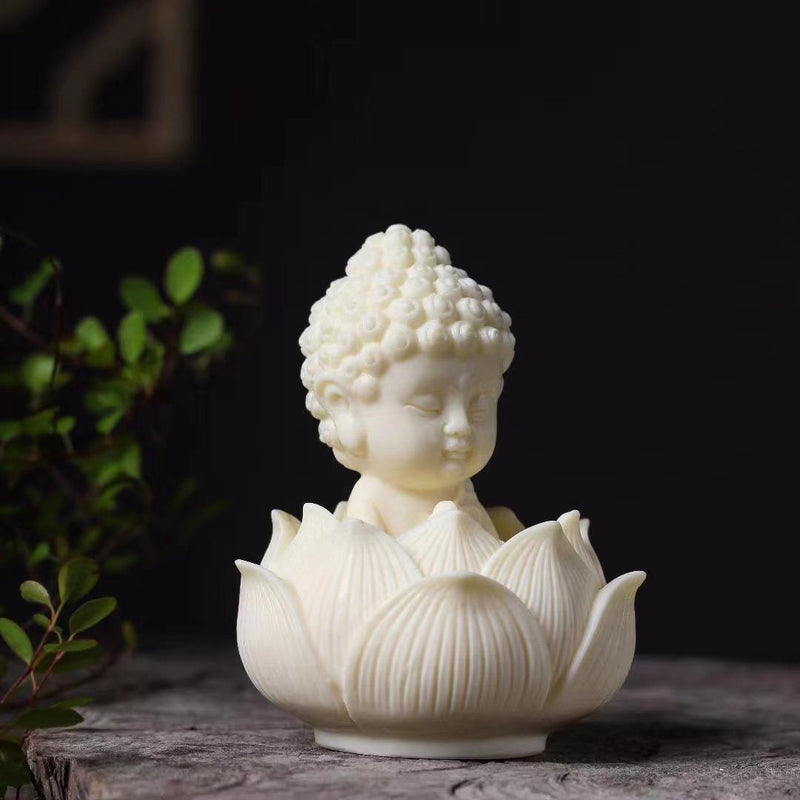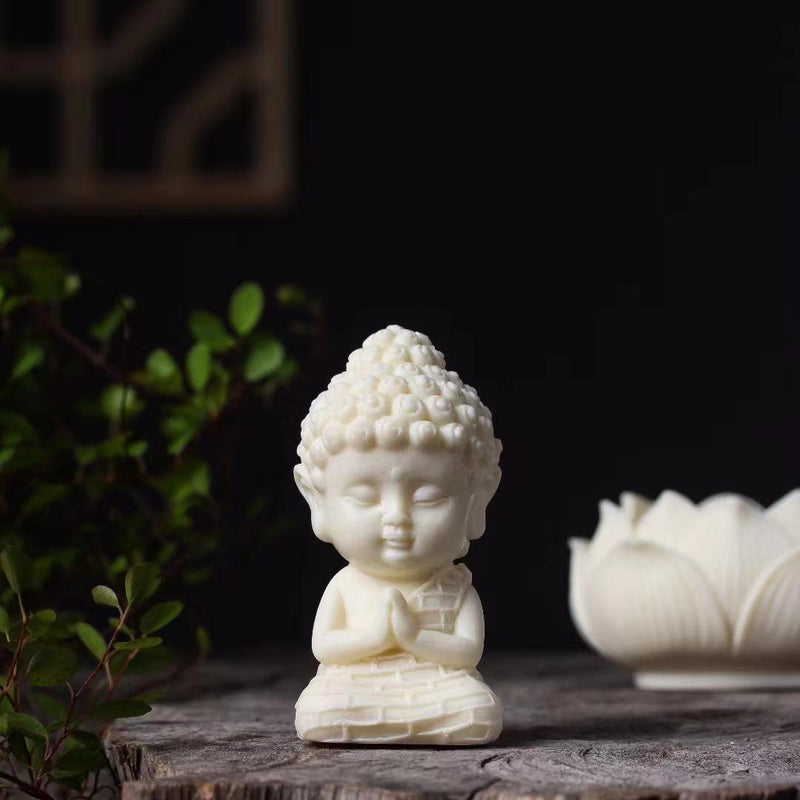Buddha Lotus Seat Bodhi Ivory Nut Carving — Nature, Spirit & Art in One
① Material & Origin: Bodhi Ivory Nut – Nature’s Sustainable “Art Canvas”
This Buddha Lotus Seat carving is made from bodhi ivory nut, also known as vegetable ivory — a sustainable, eco-friendly material harvested from Phytelephas palm trees in Ecuador (one of the nation’s “three natural treasures”).
Unlike animal ivory, bodhi ivory nut carries a faint natural plant fragrance and a smooth, creamy texture. Its moderate density (sinks slowly in water, a mark of premium quality) allows for precise detail work while being gentle to nature.
Each piece reflects the harmony between ethical craftsmanship and Buddhist artistry.
② Craftsmanship: 12-Step Hand-Carving – Every Detail Tells a Story
Following traditional Buddhist ivory carving techniques, each artwork undergoes 12 meticulous steps, ensuring that no two pieces are identical:
-
Peel the outer shell to reveal the pure “ivory” core.
-
Hand-sketch the Buddha Lotus Seat outline.
-
Roughly shape the lotus base and Buddha silhouette.
-
Refine contours with specialized carving knives.
-
Mark delicate details like robe folds and lotus veins.
-
Add micro-textures with fine chisels for depth.
-
Smooth imperfections and align form.
-
Hand-sand to achieve a soft, natural surface.
-
(Optional) Engrave Buddhist symbols like the swastika for blessing.
-
Apply gold highlights to key details using traditional gilding.
-
Polish both sides for a satin luster.
-
Finish the Buddha’s gesture, petals, and stamen with fine precision.
Every knife mark tells a story — proof of true handcraft, not mass production.
③ Cultural Meaning: Buddha & Lotus – Purity, Enlightenment, and Awakening
In Buddhist symbolism, the lotus seat represents purity and transcendence — “rising unstained from the mud.”
When paired with bodhi (awakening), this carving embodies:
-
Purity of Mind – A reminder to stay serene amid worldly chaos.
-
Wisdom & Practice – Growth through patience, like the lotus bloom.
-
Devotion to Enlightenment – Honoring ancient Buddhist artistry passed down for centuries.
④ Collection Value: A Rare Work of Spiritual Art
-
🌿 Rare Material: Only about 30% of raw bodhi ivory nuts qualify for fine carving (no cracks, even color).
-
🪷 Handmade Exclusivity: Every curve and petal bears the artisan’s unique touch.
-
💎 Patina Evolution: Over time, it develops a honey-yellow luster and fine surface “crackle,” similar to antique jade.
-
📜 Cultural Heritage: Preserves the essence of traditional Buddhist ivory carving—reimagined for modern collectors.
This makes it both a spiritual treasure and a high-value collectible.
⑤ Care & Display: Preserve Its Natural Grace
-
Handling: Wipe new pieces with a soft cotton cloth for 2–3 weeks before touching directly.
-
Avoid Damage: Keep away from heat, moisture, and harsh chemicals.
-
Cleaning Tip: Use a little olive oil on a soft cloth—never water or soap.
-
Display: Perfect for living rooms, studies, or as a pendant on a silver chain.
With time, its warm patina will tell your story.
⑥ A Note for Collectors: A Piece of Living Art
Each Buddha Lotus Seat Bodhi Ivory Nut Carving takes 7 days to complete and is limited to 50 pieces per month to maintain quality.
Whether you’re a collector of Buddhist art, a spiritual seeker, or simply admire fine eco-conscious craftsmanship, this piece bridges nature, devotion, and beauty — a true embodiment of living art.






















-
Purely Handmade & Blessed
Every piece is handcrafted with devotion and blessed by senior monks for peace and protection.
-
Fast Global Delivery
Carefully prepared and shipped worldwide within 7 days.
-
Secure Global Payments
Accepting trusted international payment options with ease.
-
One Purchase, One Donation
Each order gives $1 to support education in remote Tibetan villages.











































